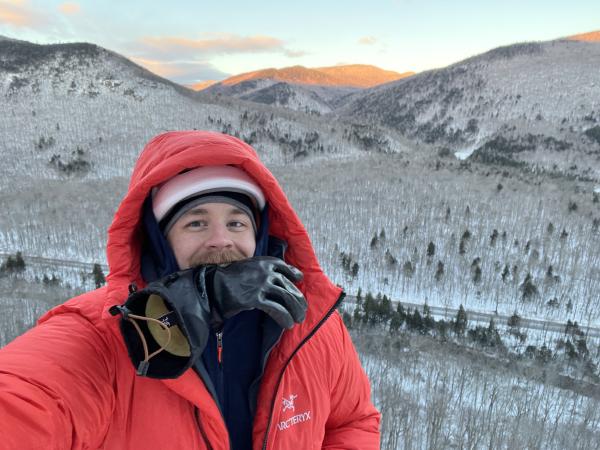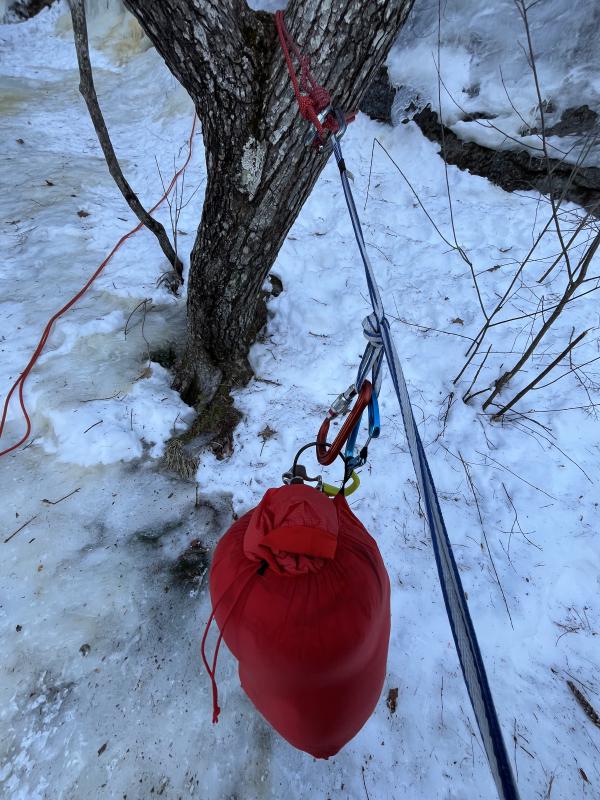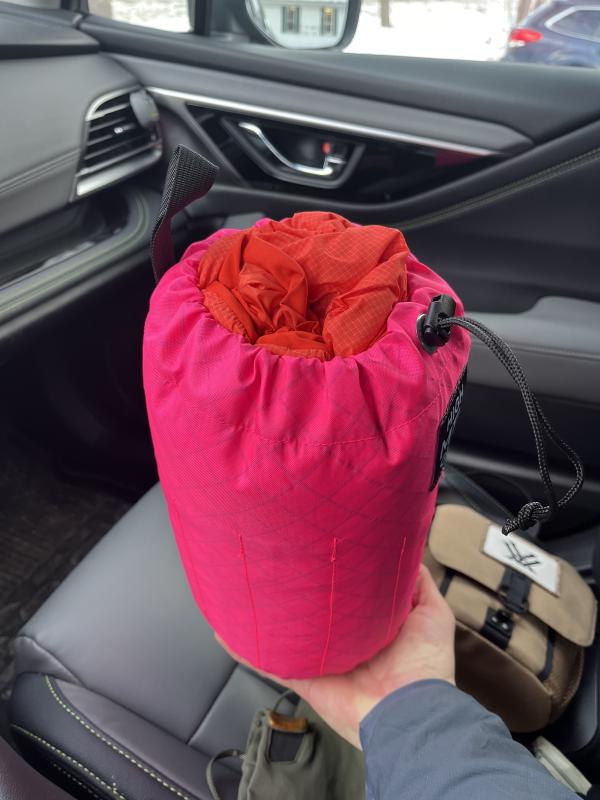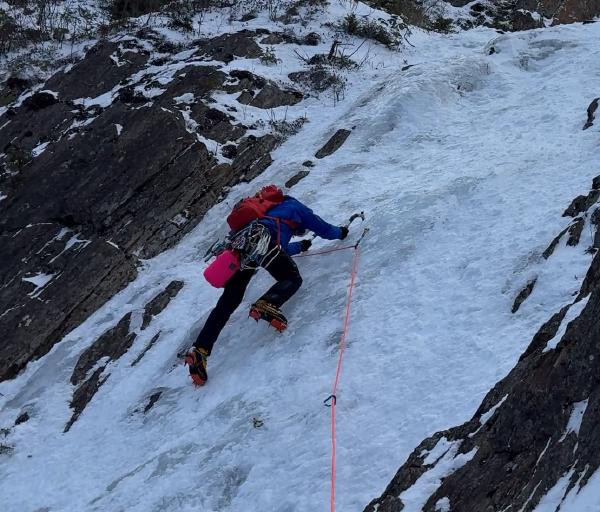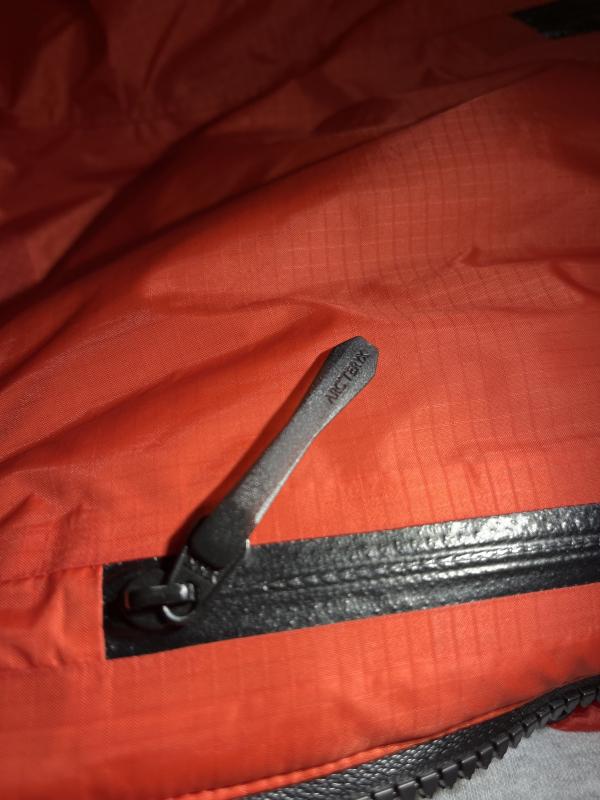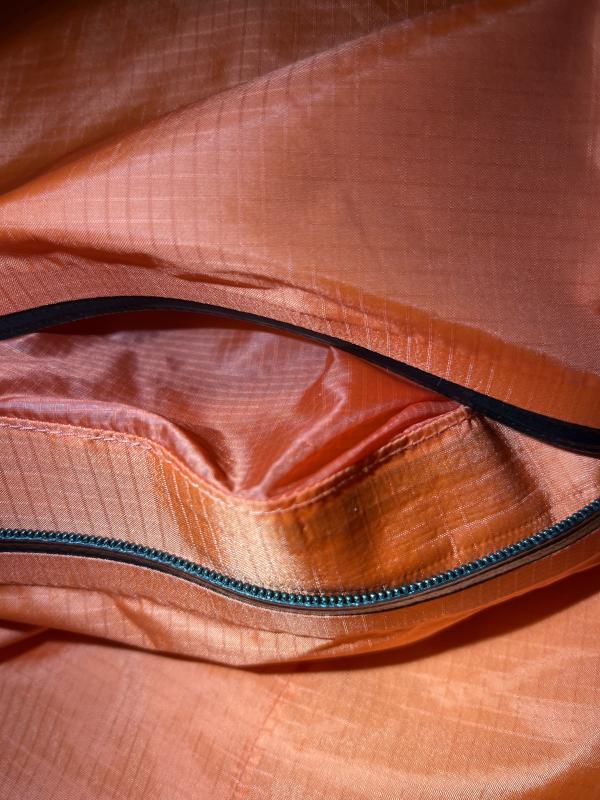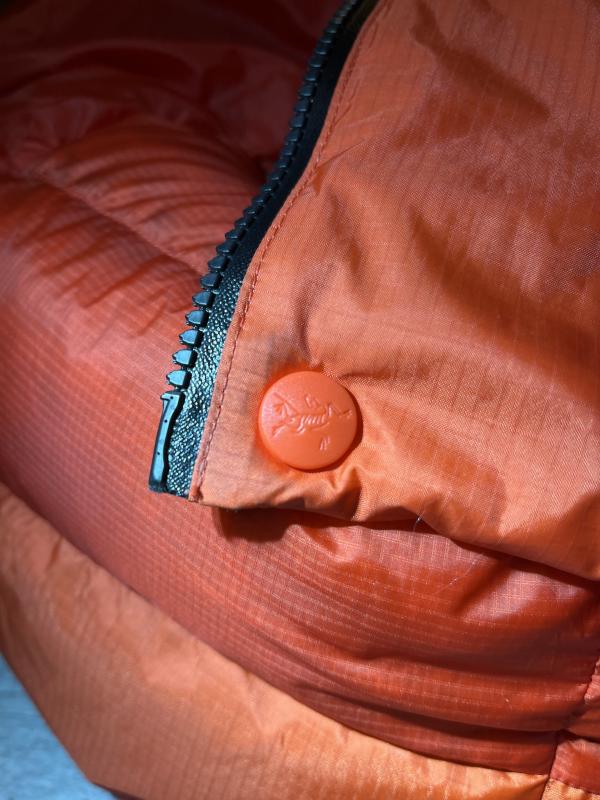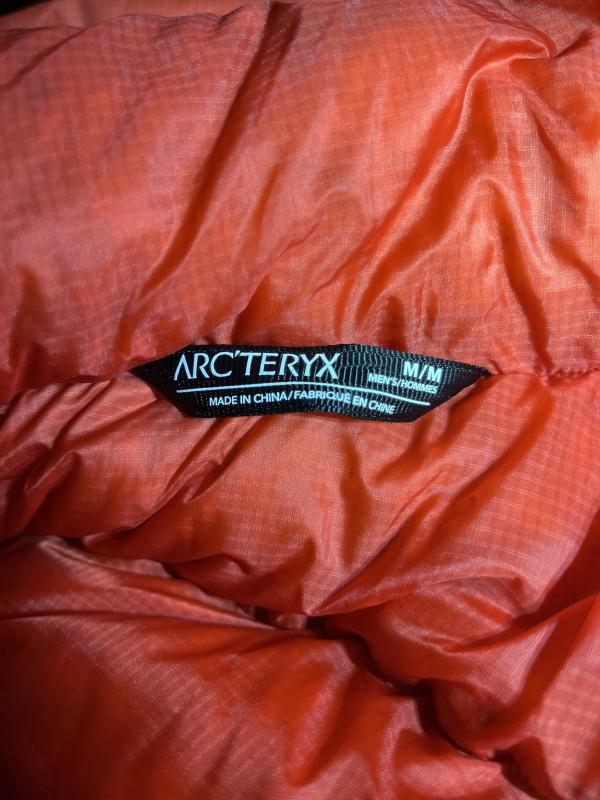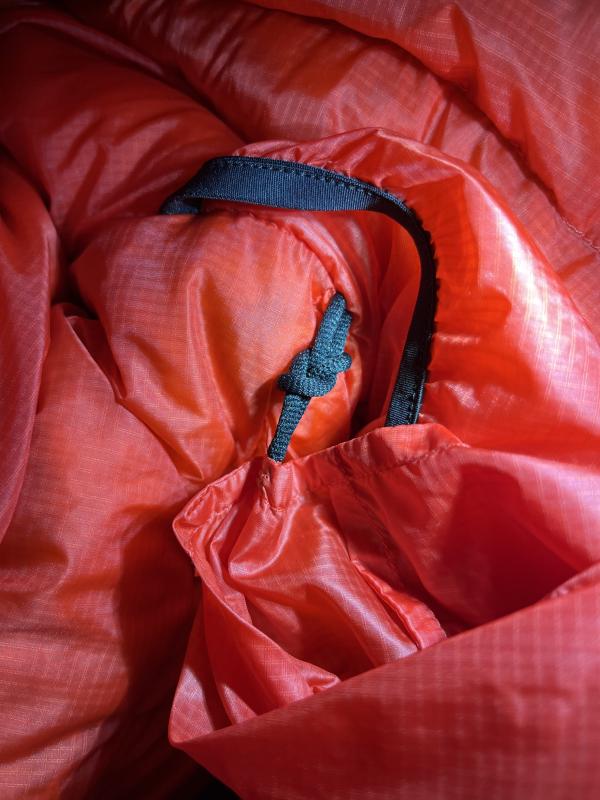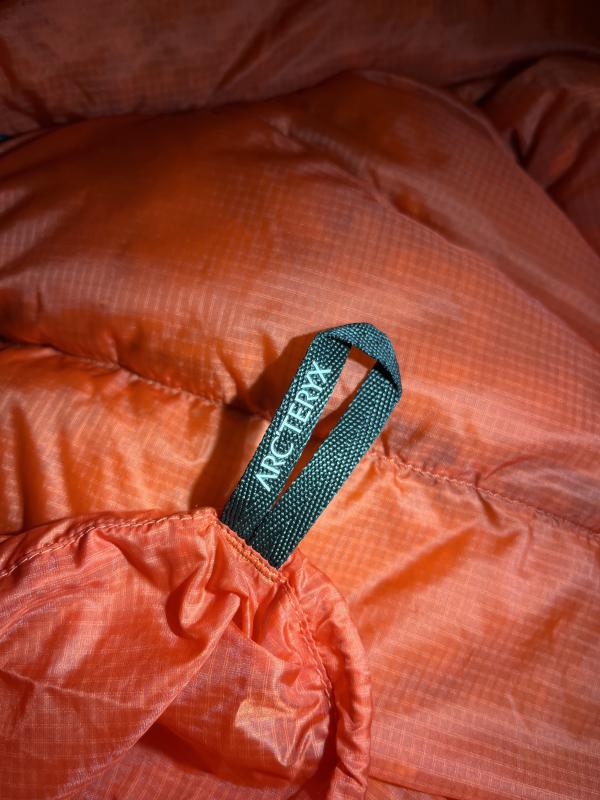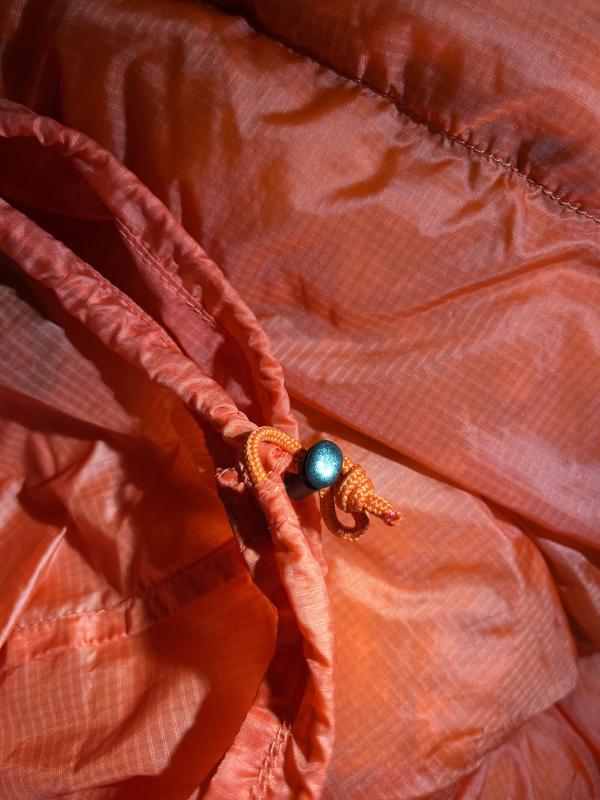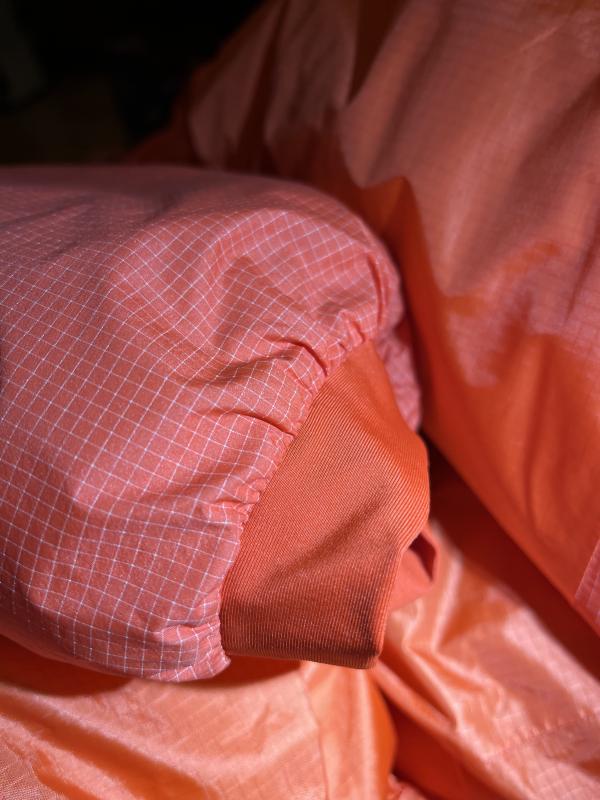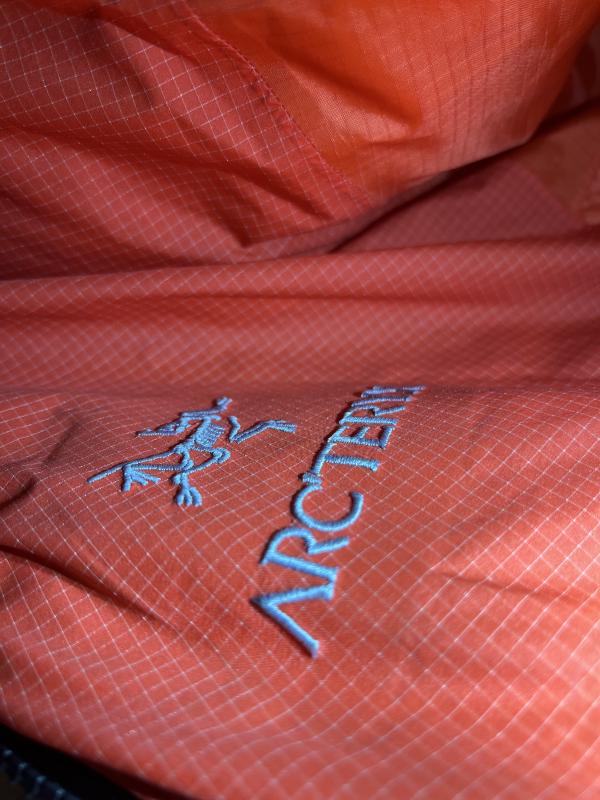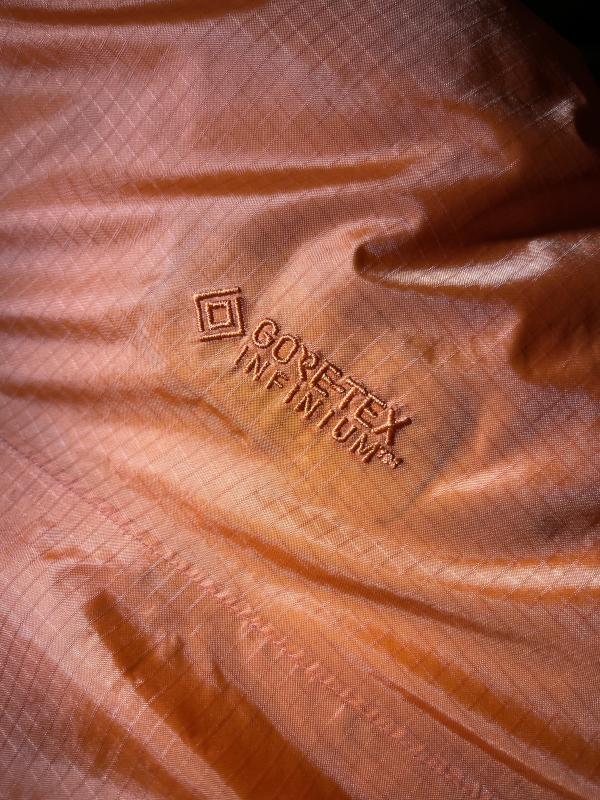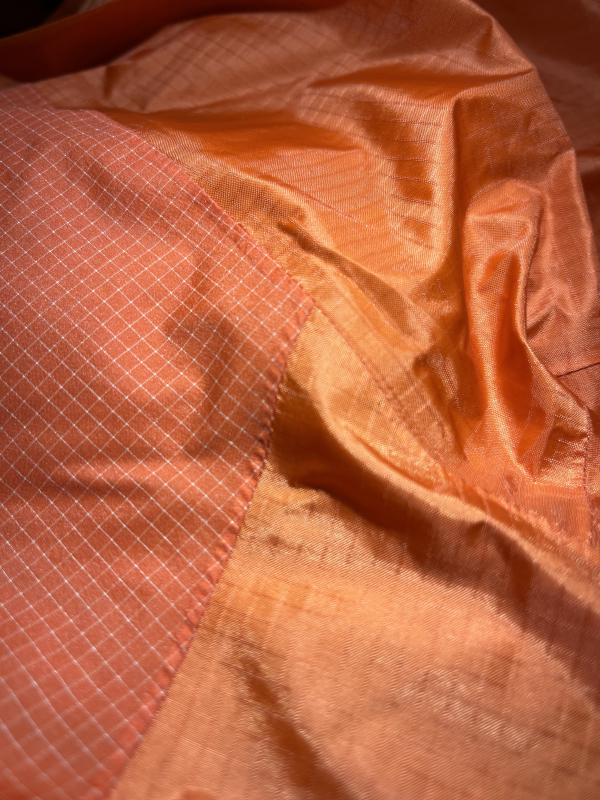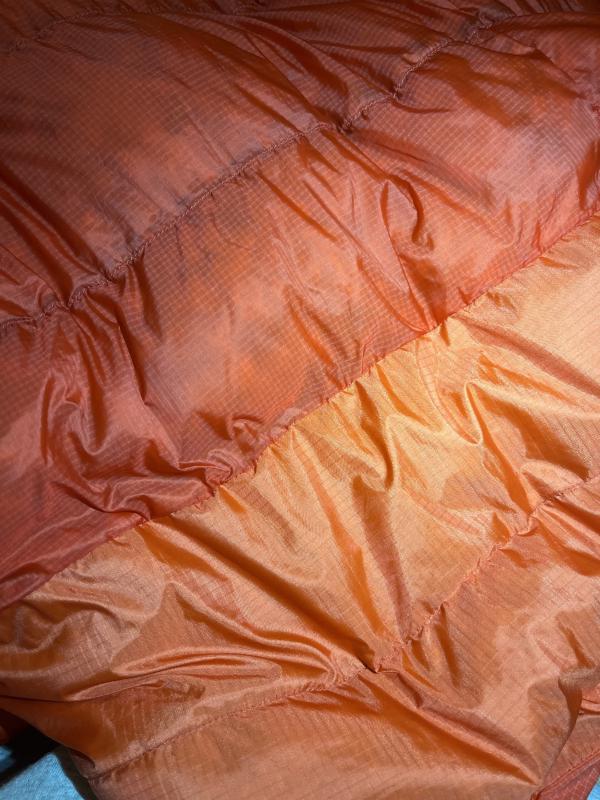NOTE: As of March 22, 2024, this jacket does not appear on the Arctery’x website. I am not sure if they have removed it for good or because they are re-working it. You can still see the men’s lightweight version here and the women’s full-weight version here but as of this point, the men’s full-weight version is no where to be found.
Let’s get a couple things clear: I have had this jacket for a season, I love how warm it is, I like how packable it can be, and I think that almost no one needs it - almost.
So…let’s talk about it.
Wearing the Alpha Parka on top of Pitch 2 of Standard Route at Frankenstein in Crawford Notch, NH
My History With the Jacket
In the winter season of 2022-2023, I bought and was using the Norrona trollveggen down850 Jacket and…. it’s fine. It is heavy, the face fabrics are not my favorite, the fit isn’t the best and again…it is heavy. As my friend Chris would say “it is a boat anchor of a jacket”. Additionally, I swayed between a size medium and a size small. I normally wear a medium but Norrona stuff usually runs a little large for normal-sized humans. After getting a small and wearing it for a bit, I realized I should have probably stuck with a medium but I also didn’t like the jacket so I was on the search for something else.
So, fall of 2023 comes around and ice climbing season is in reach and trips into the ravines of the Presidential Range of the White Mountains all push me towards heavy research and nerding-out over finding a new belay jacket I would love. After a couple of weeks of non-stop looking, reading, and attempting to find real people talking about belay jackets, I land on the Arctery’x Alpha Parka.
The Jacket
Arctery’xs self-proclaimed warmest down jacket in their lineup with revolutionary fabric technology in it that was years in the making called Hadron LCP. They claim it to be a revolution in the balance between warmth, weight, and durability - the penultimate trifecta when it comes to cold-weather layering.
As much as we love to see right through and criticize marketing material (and Arctery’x are professionals when it comes to showing off their gear), I must say that they are not lying. The jacket features the incredible baffles of down inside and a really great mixture of face-fabrics with a descent level of protective ripstop everywhere which protects from normal wear-and-tear as well as beads water and snow off of it and a heavier-duty ripstop near the cuffs and around the shoulders for extra protection around the ice itself, tools, screws, other hard materials and backpack straps. This heavier-duty fabric has added pieces of grid fabric across it. Unlike other ripstop fabrics with a gridded look, this one is 3-dimensional and you can feel the braided grid fabric woven in. It just feels tougher - that isn’t very quantitative but I am here to be opinionated, not scientific. If you want the pure facts, just read the Arctery’x website.
So, the jacket is great and I am a big fan of it. I have been able to use it on cold, humid New England winter days when you are standing waiting for a partner to get through a crux pitch and you are standing in spot that seemingly hasn’t seen the sun in months just wishing your fingers kept themselves warm without your involvement. I have brought it up in a backpack as well as attached to my harness in the stuffsack that comes with it inside and attached to the inner right stash pocket. The latter method works fine but the jacket is a dense ball of weight that hangs off a seemingly tiny drawstring cord - but if all you need is warmth while you move over some pitches fast and light, this is the way.
Jacket in its stuffsack hanging off my anchor
Additionally, I have found that it stuffs into my new, neon pink High Mountain Gear ice screw cannon when it is empty - but just barely. I have the smaller, alpine size cannon and I bet if you went with the larger one, you would have a nice time with it. I find this method the best because your cannon can still be on your harness but your screws are out and racked so it is empty. Additionally, the cannon is a much more protective fabric and you have lugged it all the way out there anyway so why use the dainty sack it comes with if you don’t have to?
The jacket stuffed into the HMG ice screw cannon alpine Climbing with the jacket in the HMG ice screw cannon on the first pitch of Parasol Gully in Dixville Notch, NH
In both cases, the jacket really does want to come out and so you get this sort of mushrooming at the top of the sacks. The drawstring cord better be good enough and you better trust the thread locker on it or it will start to open up.
Let’s get into a bit more of the nitty-gritty details about the jacket that I think others do not touch on. We will just go over all the features I can find and think are worth noting - both good and bad.
The Nitty Gritty
So, in no particular order, I am just going to start to paste some pictures and talk about what we are looking at. Let’s go.
Zippers, Buttons, Pulls, Loops, etc.
Chest pocket zipper and pull
I am a sucker for a good zipper and pull. In the last few years, Arctery’x has made a sneaky switch to these plastic zipper pulls. For reference, I am the type of person who immediately takes zipper-pulls off of whatever comes on my stuff and makes my own out of this special, dyneema-core + polyester sheath, neon orange cord that I love. However, I got an Alpha SV hardshell and I first saw these pulls and they got my attention. I liked them and they were nice to pull, but they were also not super easy to get off. You can get them off but you have to want it. So, as I do, I started googling about them and tried to see if they were special in any way and it turns out, they might be. Rumor has it that Arctery’x spent quite a bit of time on these specifically to get the material right so that they pretty do not freeze. Those of us who spend time outside will know that pretty much anything will freeze and when it freezes, it makes pulling on it and gripping it….really hard. So, as far as I know, these are special and they are the only pulls I leave on. One thing I will say about these pulls: they exacerbate the sail affect in the wind. With a consistent wind on you, they will flap like all hell.
As for the zippers themselves, they are top-of-line watertight zippers that you would expect from Arctery’x - who revolutionized the zipper game with them. I won’t go into more detail about it but you can read a bit more here.
Hand pocket zipper open with fabric differences showing
Open up the zippers to take a look inside and we will see our common theme of attention to detail with the fabric choice. This picture in particular tries and fails to show the shear difference between the two fabrics here. Your hands feel it. You get the same, thin nylon ripstop for the pocket-well that the stuff sack is made of - or at least it feels that way. It is very silky and smooth. I really like this although a lot of people prefer felt/fleece. The reason why I think a pocket like this is best is because it is slippery! When you are wearing gloves, you hands don’t get stuck in the pocket on the way out - really nice. The much thicker fabric that abuts the nylon here is mainly for the zipper to have a shelf for stitching. These watertight zippers are thick and heavy and you do not want them failing - so, you need this thicker fabric.
Closure button on the bottom of the main zipper for added security
There is indeed a branded (wow) snap button closure on the bottom of the jacket. It is great if you want the added security of the jacket bottom staying closed - specifically because of the two-way zipper. However, to me….. “meh”. Seems unnecessary as the main, two-way, watertight zipper on the jacket is not really easy to get on and off the track. I will touch more on this down below.
The hang tag by the neck
Finally for this section is the hang-tag at the neck of the jacket. It is the same branded webbing that you will see on the stuff sack and it is nice. I wouldn’t trust it to hold the jacket up for years with all of its weight over the hood but you do you. I can confirm it works and it did not break the few times I have hung it that way. It is one of those things that would be a big deal if it didn’t have one but it does and it is nothing special.
The Stuff Sack
The stuff sack attachment point to the inside pocket
Here is a close-up of how the staffsack comes with the jacket. It is already stashed in the right, inside pocket and it is already tethered to your jacket. This is the loop on it attached to the matching loop on the pocket. It is easy to remove and re-attach. The idea, as with a lot of other jackets, is if you invert the stuffsack and start stuffing the jacket in that way - sort of collapsing in on itself, you get some benefits:
- When you then undo the stuff and take the jacket out, the tether is still attached and you don’t have to worry about the stuffsack flying away
- Once packed, a loop that appears to be on the inside of the stuffsack when you look at it uninverted reveals itself. This is the loop you use to attach it to your harness. Let’s see that up close.
The bag clip point where the stuff jacket will attach to your harness
This is a thin, branded (wow) piece of of thin webbing that appears to be (rightfully so) the most stitched piece on the sack. Once packed, this is the loop that will keep it from falling off your harness and down a frozen waterfall. If I am honest, I think the whole thing is a little “meh”. It is really great for being light but it just feels like it is going to rip when it is stuffed and fall off when attached. You have better things to worry about when you are climbing than if you are going to puncture this paper thin 10D ripstop bag and then your $1000 jacket and if the thin piece of webbing is going to break and send your only warm layer back to where you came from.
As I touched on before, I think I would use something a bit burlier if you have it or just carry a backpack and stuff it in there.
The thin, orange pull cord that keeps the stuffsack closed
The final part of the bag to look at is the pull-cord. It falls in line with the other parts of the bag being thin, light and untrustworthy. When stuffed, it is a bit of a game to cinch this thing in time before your puffy starts erupting. Even when you have won that battle, you then need to come to terms with the cord-lock slipping a little bit in the beginning of the fight between packed jacket and cord. After a couple slips, it does hold and I have not had it totally open up on me - I just think we could’ve gone up a couple tenths of a millimeter with the cord thickness for the fight.
The Cuffs
One of the cuffs of the jacket with the soft, stretch fabric for around your wrist with the hardened face fabric abutting it
Just beautiful. They are the softest, most perfect cuff you would want for this sort of jacket. They are not too tight, not too lose, and the fabric that the elastic is made of is really soft. All around just a great design.
It is abutted by our extra-strength grid face-fabric which makes a lot of sense seeing as these cuffs will see more interaction with a rope and hardware than you may initially think.
*****Image not found :( *****The thought is not just on the outside either. You will notice this theme of fabric switching on all parts of the jacket. The inside of the cuff has a triangular vent as well as a more durable fabric in the first couple of inches presumably for protection against things we wear on our hands and wrists like watches and gloves. It is a nice touch. I struggle to see the value of the vent here as the cinch on the cuff makes airflow here very minimal but - and this is just a wild guess but would be awesome if it was true - this could be helping transfer heat from the rest of the jacket down the arms and towards the hands.
Embroidery
The jacket is, of course, branded. Being one of the most - if not the most - expensive jackets that Arctery’x makes, branding is important and they want to make sure it can never leave. I own several other jacket from Arctery’x and it seemed to be a theme there that only the Alpha wear was getting embroidered. I have a proton jacket that I have had for about a year where the reflective tape on the chest and hood branding is nearly gone - now just an orange jacket.
Anyway, both Arctery’x and their best from Gore is branded with embroidery on this jacket. I am not complaining because I love it but I just like consistency across the range. I do understand that it would be ridiculous to embroider on a very lightweight jacket - but I digress. In any case, they are nice, the stitching appears to be perfect and I am sure they will still be on this jacket long past my death.
The main, chest embroidery of the Arctery'x logo The 'Gortext Infinium' embroidery on the arm
P.S. - Don’t mind the changes in the coloring in some of the photos. It was just the light and angle I was using.
The Fabric
I have touched on the fabric in a couple places already but I just wanted to show a couple pictures of places you can see the difference pretty well.
Clear view of the changing face fabric
Here is where the shoulder fabric meets the rest of the face fabric and you can easily see the difference. As I said, this grid-fabric is increasingly hard to explain. It is smooth to the touch but if you grab the fabric a bit harder and run your hands down it, it feels a bit more grabby than the other face fabric - hard to explain.
The fabric change on the inside lower section near your butt
Here is another comparison but on the lower, inside part of the jacket - by your butt. This is actually a hidden gem of a detail in my opinion. I have seen a lot of friend’s belay jackets fail and rip in this area. Why? Your harness and all the pretty, expensive, sharp gear you have on it! This jacket features a thicker fabric around the bottom edge - just like we saw around the first few inside inches of the cuff. This should help prevent ripping the jacket due to dangling gear - really nice touch.
Verdict
The Pros
I am going to keep these sections short because, by now, we both know enough about the jacket to make our own decisions. So, let’s just list the things I love about the jacket:
- The warmth: No doubt it is one of the warmest out there that money can buy - and you need a lot of it to buy it.
- The durability-to-weight ratio: For what it is, it is really durable and I commend the team at Arctery’x for not taking the easy way out of using the thinnest fabric imaginable with a bunch of down on this one. I think they have really struck a beautiful balance here with weight, warmth and durability - and it is a balance.
- The hardware: The zippers, pulls, buttons, pockets, loops, and fabric are all great on this jacket. I find it really hard to fault them at all and that is in line with Arctery’x as a brand.
The Cons
All that good stuff being said….there are problems with the jacket and some of them might be deal breakers for you.
- Weight and bulk: This is not the lightest belay jacket that you can get - it just isn’t. That fact becomes really apparent when you compress this jacket - it is like a rock. It becomes a concentrated mass of weight that hangs off you harness and that just isn’t going to fly for some people. I think this is the main con that comes from the balance that has been struck with durability and that is just something you need to decide if you want or not. Just don’t be fooled into thinking that when you pack this thing down into a stuffsack and attach it to your harness that it is going to be the same light, airy, sleeping bag-ish thing you usually see - it’s not.
- The price: This just has to be here like it is on any other review you read. This thing is just crazy expensive and it is going to be out-of-reach for a lot of people and that sucks.
- The main zipper pull: For how much I love this jacket….zipping it up in the moment where you want nothing else other than to be warm….is just harder than it should be. There are reasons for this and they mainly come from having a two-way, watertight zipper but I find it one of the biggest downsides of this jacket. I really find this a shame too because when you distill a product down to what it should do at its core or minimum, this feature is up there at the top for this product - you want a jacket to keep you warm and you want that warmth to be easy to access. With cold fingers after a hard pitch of ice climbing, your dexterity is going to be lower and even lower with gloves and you are left there standing in the wind with a zipper kind of just laughing at you while you try and get it going.
Who Is It For? (and not)
At the end of the day, I like owning this jacket. I think of all the cons I mentioned, there isn’t one that I can’t get used to. The main zipper pull does get easier when you learn its little tricks - like getting that alignment just right and pushing from the bottom instead of pulling from the bottom. The bulk is also something that you get used to. The more you have it on your harness, the more it just becomes a normal piece of gear that you get used to. It’s like leading for the first few times and realizing that carrying 11 ice screws is heavy…but you learn to live with it because that is just part of the sport.
Now, back to the very first sentence in the description of this jacket. I said “I think that almost no one needs it - almost.” So, who do I think would benefit from this jacket assuming they love the pros and can live with the cons? First off, anyone who is outside doing a sport in the winter that is ever standing still with not really and option to move. That sentence mainly targets ice/alpine/mixed climbers - I think these are really the only niche group of people that could justify this jacket. Maybe, if you wanted to have a nice layer for sitting still and you are an avid winter camper, I could see that too - but you will have a sleeping bag and this is pretty much just a sleeping bag with no legs.
More generally, that means pretty much everyone else does not need this jacket. I have seen pictures of people wearing it skiing and ski touring or snow shoeing…no. I get the appeal of this jacket and it is awesome to say you have the warmest thing Arctery’x makes but if you do any sort of moving during your activity, I don’t think you should be wearing this - I think you should take a closer look at your layering system. Again, the only true case I can see where you might be doing your sport while wearing this jacket is if its so cold out during your climb that you want to wear it during your climb to warm up yourself and the jacket for when you get to the belay. That is really the only scenario I see that happening.
Overall, I am happy with this jacket and I think it was a great exercise to go through each piece of the jacket’s features and reflect on what I have liked and disliked after most of a season with it. I am excited to bring it on more adventures and find better ways of using it and packing it. Who knows, maybe my opinions will change the more I use it - they usually do.
